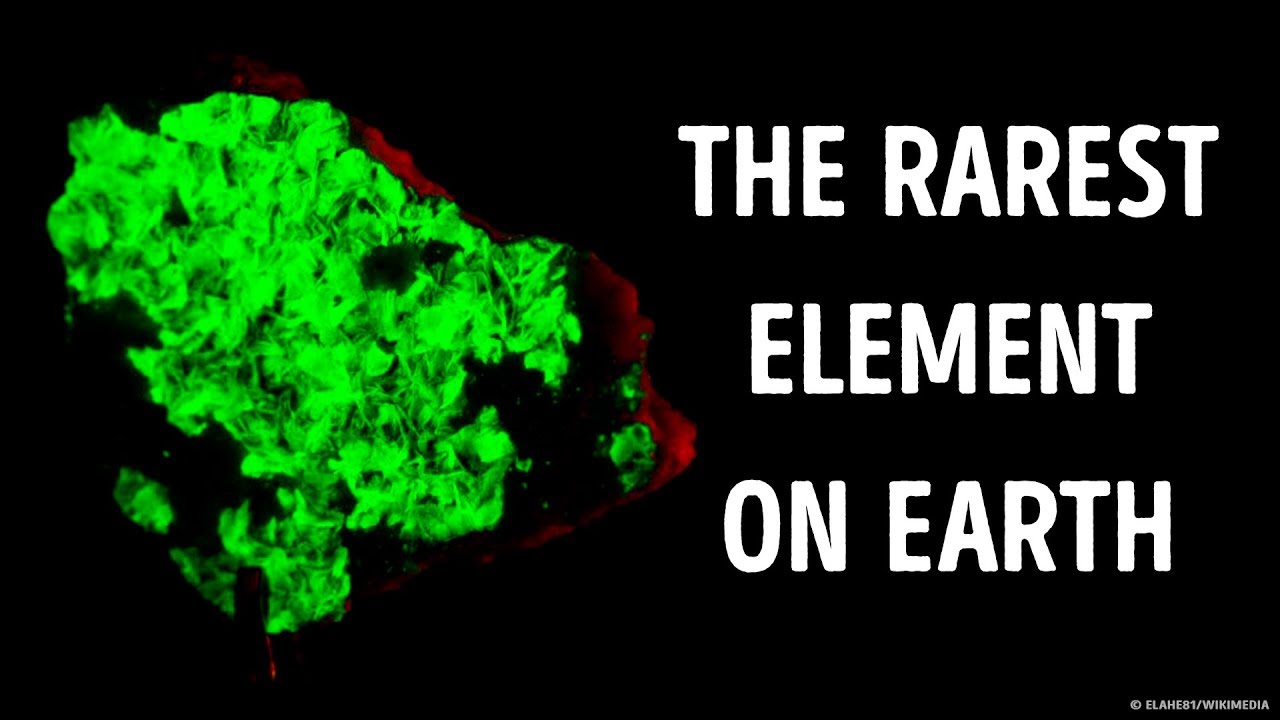What’s the Rarest Element on Earth?

We’ve explored a fraction of the ocean, most of the Earth, and parts of our Solar System. But, do you ever wonder what everything around us is made up of? You might be surprised that the most abundant elements in the universe are limited on Earth.
What happens below the Earth’s crust is inaccessible to us, but not for our lack of trying. In 1970, we tried to dig a hole that would go below the crust. The hole was just 9 inches in diameter, and it’s considered to be the deepest hole in the world – in terms of true vertical depth.

What’s the Rarest Element on Earth?
– Oxygen would be #1 on that list. Apart from its presence in the atmosphere as a gas, it’s also present in rocks.
– The 10th most abundant element in our list is Hydrogen. It’s the simplest element in the Universe and it goes all the way back to the Big Bang.
– The 17th most abundant element is carbon, which is also the second most common element in our bodies, holding 18% of its mass.
– Iodine is the 61st element on the list. It’s the heaviest of the stable halogens and it has a dark purply color. It was first discovered in 1811, but was given a name 2 years later.
– Which is why helium balloons rush to reach the sky when you let go of them. Helium is also the first noble gas, which means that it doesn’t react with other elements to form compounds.
– At #74, we have platinum. It’s mostly found in copper and nickel ores in South Africa.
– And now it’s time for the rarest element on Earth: Astatine, with the most stable isotope, has an 8-hour half-life.
– Chemists were on the hunt for this missing element for decades. They believe that it has a shiny black metallic color.
– Until they found it, they gave it the name Eka-iodine, since it belonged to the same family with Fluorine, Chlorine, Bromine, and Iodine.
Animation is created by Bright Side.
CC BY-SA 3.0 https://creativecommons.org/licenses/by-sa/3.0:
The borehole (welded shut), August 2012: By Rakot13, https://commons.wikimedia.org/w/index.php?curid=21029748
Kola Superdeep Borehole: By Andre Belozeroff, https://commons.wikimedia.org/w/index.php?curid=6822548
Distrikt Mysore, Karnataka, Indien: By Parent Géry, https://commons.wikimedia.org/w/index.php?curid=19699881
Several corundum crystals: By Ra’ike, https://commons.wikimedia.org/w/index.php?curid=1340975
Natural ruby with inclusions: By Humanfeather, https://commons.wikimedia.org/w/index.php?curid=6969673
Pieces of hafnium: By Deglr6328, https://commons.wikimedia.org/w/index.php?curid=6875345
CC BY-SA 4.0 https://creativecommons.org/licenses/by-sa/4.0:
A magnox fuel rod: By Geni, https://commons.wikimedia.org/w/index.php?curid=5542775
Liquid iodine on the bottom of a beaker: By VelichkoArkadiy, https://commons.wikimedia.org/w/index.php?curid=56831960
An aerial photograph of a platinum mine in South Africa: By Ryanj93, https://commons.wikimedia.org/w/index.php?curid=50106591
Astatine: By Elahe81, https://commons.wikimedia.org/w/index.php?curid=47724239
By Wiener Edelstein Zentrum, CC BY-SA 3.0 https://creativecommons.org/licenses/by-sa/3.0:
Padparaja sapphire, cushion, 2.28cts, https://commons.wikimedia.org/w/index.php?curid=31984882
Sapphire, radiant cut, untreated, Sri Lanka 1.15cts, https://commons.wikimedia.org/w/index.php?curid=31984881
Yellow sapphire untreated 0.67cts, https://commons.wikimedia.org/w/index.php?curid=31984841
Purple sapphire, pearshape, 3.20cts, https://commons.wikimedia.org/w/index.php?curid=31984889
Sapphire pink octagon 1.17cts, https://commons.wikimedia.org/w/index.php?curid=31984883


![[ID: jvNU5bwzclI] Youtube Automatic](https://bizimtube.com/wp-content/uploads/2021/03/id-jvnu5bwzcli-youtube-automatic-236x133.jpg)
![[ID: 0yCJMt9Mx9c] Youtube Automatic](https://bizimtube.com/wp-content/uploads/2021/03/id-0ycjmt9mx9c-youtube-automatic-236x133.jpg)
![[ID: vAJM5EdDwjU] Youtube Automatic](https://bizimtube.com/wp-content/uploads/2021/03/id-vajm5eddwju-youtube-automatic-236x133.jpg)
![[ID: LxOmofEFub4] Youtube Automatic](https://bizimtube.com/wp-content/uploads/2021/03/id-lxomofefub4-youtube-automatic-236x133.jpg)
![[ID: wFAh77GBsHs] Youtube Automatic](https://bizimtube.com/wp-content/uploads/2021/03/id-wfah77gbshs-youtube-automatic-236x133.jpg)
![[ID: tjwrG4Debc4] Youtube Automatic](https://bizimtube.com/wp-content/uploads/2021/03/id-tjwrg4debc4-youtube-automatic-236x133.jpg)
![[ID: _28bYGZtnU8] Youtube Automatic](https://bizimtube.com/wp-content/uploads/2021/03/id-28bygztnu8-youtube-automatic-236x133.jpg)
![[ID: 1e7bhUjUEJ8] Youtube Automatic](https://bizimtube.com/wp-content/uploads/2021/03/id-1e7bhujuej8-youtube-automatic-236x133.jpg)
![[ID: QjyCviSKY2U] Youtube Automatic](https://bizimtube.com/wp-content/uploads/2021/03/id-qjycvisky2u-youtube-automatic-236x133.jpg)
![[ID: -5i-vB4-kFk] Youtube Automatic](https://bizimtube.com/wp-content/uploads/2021/03/id-5i-vb4-kfk-youtube-automatic-236x133.jpg)
![[ID: covHhQgr5kU] Youtube Automatic](https://bizimtube.com/wp-content/uploads/2021/03/id-covhhqgr5ku-youtube-automatic-236x133.jpg)
![[ID: mX7FEHws43A] Youtube Automatic](https://bizimtube.com/wp-content/uploads/2021/03/id-mx7fehws43a-youtube-automatic-236x133.jpg)